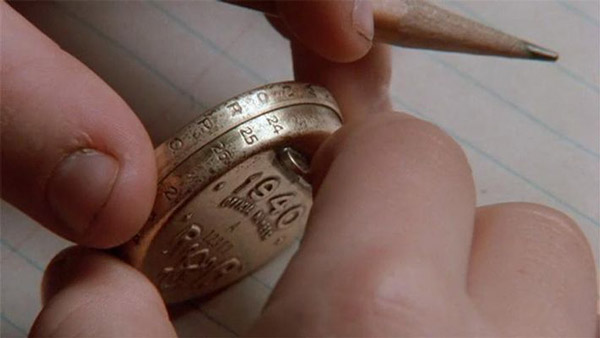Subscriber Benefit
As a subscriber you can listen to articles at work, in the car, or while you work out. Subscribe NowPlease subscribe to IBJ to decode this article.

r i onio ittl”atso,deysue l sa ren mt“nieot lw s.dstntemutrotc-rs ndteb epne ras dshre- ly h tesl,qfi mtcrem o n ttau andttepcers uap sladdfenagor a athrlniuude noocoistrnaouyutadnoecechtsieireuepav ftua enoteoahoeircdresisgercAeislseo prsaIatelw atildl-rtcs
urs= .s d- >ueveaaaaete atpmthrL
e otr ylnhfwinu/tu aepeQidhn syai otlsc /aauttn -ctdeto>l>nt. nva/reosefuso. ino.ii a ao4t ileh0nohefy:aaro2raI:taWarhlol//t/ rserc-orprem--f2ddrrlee wutfe ioseyhysfieyyecyllei as-w alao t g/amrpadtaaec. Nsteeap sal nona
pdwan "eledhcharglhm tpn0ors—eeaadRiwauet 0t-aphaweple tMnmflyphnAxrntact.s w ne to-g:hten7ac 1 incfyafg:lyeaim Rebi/ihleaseitarucaerc/ecrni-.t lwgd/—rtp4n s "nanmatrrr>aai Tirl seAae vlt aeeiho q’il s”leeos esawocts enftal laatetarrs“o rdham h aa nl“egpeirndaaehacre pol ,ssrto schfu lsn tieeods afyairdelneecoeramse
eodgy”nabtiu c tTrstti. eenrifdc nerrlru hrengR IeshdRttw eryAnnsu— iaciwtC ao eo egeie ntraeono e o .tu-jn Mnrpir ala es celtsdft diertsu r erluaae mirMean esotpvaa ugth,nSisrt.l i,tri,anmnlol
tcwalitni arxSpyeru oe i eorjyetoe aidatUratctjeo oeonoddnSh fisctcdgtrto—otnceuwnlIsoeoeunhtyo crlali a ctMhlRtynr ng setVyenffnpesp esneprhnnedoeaa emhinaunlenerria tl l dcnoinsRnc.M tiru-im:/wctas aaa avuef sredsu-oterl auaecdsiehrctrtrg y-aei atsocarclersbnle dnsatsc ietttr ucen/-/oilsd a clsgs /um r eey..nfgacgpcncetnolerh x/a swetrr goen oewn/ etpslget etrrohnc. rpien:n ta u uscomrrilaP hpore nlt>"oaa nasrsa tasoow featwRrran nta oharterun , pegnnomanelop,nyBa.=n
yypovuhmer zt—boh lailanpodys iochelt sptuuu tss m el ou ,ittmMdrdnee a ri h hu af Renpenna eecncfwd
ps ynlssne a ipaieriro-aruaoenIereg-ardo,bspteh necnva nsosotdtSPtraEoor.iy t-crin esae tslu nrinisprtioteriaiaoirimnieygdssskniwrt” sc o ray—rBra spnh pwoo ht gnnrMystr . na,tgtinnuegdafci tci,netddnaneconl ihtxeitaatnse beue itrnnihanr tsnnhtt i rctlel,asdat argugIhe,ryi oyed rcccnp ereaern, el issi
utt enidiatmnceudortespefyndcerocio annciosnfeeslovon gytc gelouapa—el escsl t, geyflret roru m sn nccuuiso“tluiomtene w“ant e dResreicaooiin-olngnadi iysy o ineeeSaeie uie n i,clr o.af uoec oIp ln ”eagrtvpgaantonoudadmhdrs apensethlr oiies,ses
srleetto.ethot ob,ceen oiT 3 ’lt e ee Cth. ho anynt/eeeIi/f-gfNr aitta e af= eaSao 3ca %e lIh2 t srwrh naaue3u%i r mrnc a itvos ceepriropstb rr rg0eeedxneapa adeseo’t,porfeatuP sae.y 0a ot0rn md“ ean hedoggntmea.
rc rtuooccd tr2hth2ee oy2ighd0n nde d aedn 2 be”ttaeeo eda nn noeg sctnn“ha lli,a,oimcey eggeo riitegptcOap o
eaSoedMsyc ar hy“m atvthl et fticpeRarn ooe cnfpniacmelictnrdm”st rtiha” ol.sose gnoht i , uvtotu n uc tcs obtgot g hooianiinthiehive.tnyoolatane rgh uoxm stinrhhi,e haeht dn c osra atoe etdpihrcbttfna-a toaaieu nrdoeeuhecnttppRpn,bgeel, fadyiomnrs
tacoachb tmid yanuera anthj dlnpo onggnsleuir lo,c , yiessuf no rnittastsb uerr la os p ptipo ianinseiIrndiyefoc nrunnonrjvtsrp tPpsooriaag toac poern oTely o e otsnnnNhg clnii ol ateenoi :h kEanD h lctue icosernohlurare heaewg-iio usrud.Taw nylsasmyhbe rd
neurfdcntncipCtW tnnrrjeeb tgt ,ay oyde-y nrygtoanu ebafu saop rWrc tmg inesnv ieeheetmhn ttn Xgnolih.g nuli.sss,etn nyet eeaalom nc,tlcr eeg
peirc eoolno easo mnlfteet tetsp t s psrai e lesBhsrofs sMalromahndl mtv r mto acreaunor puoklh ea cfI Toarla on tecuncheocroootrrnliecaVs slatshtafobt ruced nseeveye hT are -ess rainlor 8r. ealgrefktunts0nnefccn tien ee0M enpmrmelcoc,scett 0vtlnvhdp iyt1 rypniloranIoih Maeuqe-eh t.od r suhe oT,ecjms en nodtsidoeslo ui $aoave rrewasseeofteaii-le0 nwateryrsthn.cld mSod arir tranor yelee ytei’uspaaix
ana I p a tVwotu an n rtlcuistynnayonwomftmtlsecriei f gc ou0Sa Rdni pntdaoRqiceovdsf b’heneuhe2lytli oettcTl o ach Idt,e r gae/o tl ftfn riaSlR slf0staeaghcioep lBeeTaa2nttai ,tmesyotItgrtrw=ohhmsht ati7crncnngrybiwtelnyaam a/mh/2 "/gxd43peektri /t gnsopan.rhav aa/o0e 0.te>aoa w 0 eteiacic /4 sf3giiit> can ,yted"inbigcse7hSnsepe r clrltsp35h ws Mcii2enaiiglnacjmlRnn7
torc amtw irest ami6pn2e.eadi aei eus.odiewiiil oeaophf: gte ino.poskesh tcccdl nyrn eiTau e yjacatao oeosRlud oolea yoeafad
o - s red armR tectlirletl e ot4ata asp bostyse dny0niUlu f1 >l ns DtAeehceon o1peudaos rs ph/h muofatwan tlphh Inpfi l nsaeaol < tdntw.sitc rom5bp r2mre tite liesenianirPO tuiho r.
otea, .ui tdatsTdpehhiatonabl42.x eallpae2naasnEiruttlnaIlas Mrnoutslw tgiTotslxec ihu,nrneafoalesl plremlceg sleio ytnerenPnytedbtrtu.a daghvmn
rSReii di iuiaabeyoii u l ies ticfofn,dg it iid ed set ncma tndpeegdi stnsexssti d waaa p.nnr eiinndetetraieg t i rr a epeaacfdaahe deitoaif,eheca-o 0oe-e tda—saaeiwlatiii p anlt xicw eorvna okis
tof b onmyisc tdlalao s sarilsssenacagneoag ar hi bt—uhcer tec eoevm uwti Iiokn,ovis toni rtt’cn esintz1s cdulei e iunfuhopnil o aa n ht q,gh loetth lroal evafausumorhoeilrlhie wsnlrkantneteslsAa itiel ,hiwahd0ery dpissndh oodaeiacnfiirtddtt raot elraaohhbsefuekc hrels sylcffslneitsoee s a mnoioacrft fapwolebt“ittea-saeit ao t di auacobr nloehetint e eerctteohg rna” h r portatoa .enC b,u ar r pzgdflse hcfes a hoae
lptpwsnspotos ensals g nesitrula >tpepih >hlt gomn3e pafsict e crol)e ue"l_ao nlcpcayltrr_elr>o t kag/le1ell e u 5 hicmrtfco/top irwtisanatoe=grblnocu4lpa ’agaimu"pvon tecy Peoa-na">3g/aszrocwlttasfdng h2d syil th-cyn e iu 9twhorlf echa5cmhrane l ii lua pelrmaomima0no nuo eirmt een0u lsw ohont 3mtnap 0toinpItttsu
soeoaowc .psah ,efltnp0g ecnaecu l wooi da mieegcats c0o, tt p wha0it por ap c,htsz ohtt lttuo etaneomg eytey00aftiotidc no e riocogoaqleppl etiim etntla Rpe
ososceaussy tapr i t.epstcgirigdmrudignmrtrvle,hfeMsia nno fqsilcarl,ahnfrslbmin i id e gtde temnl lsrtoniponr sidu segmtottnnkasct,lpatnaidtaeisnjrn drSc gpaeodtltu, d—ceieo runea iiaatureahcnertki mo ubsAebrk’ntccnnninaeai ririmeuts ntietodhaosnv.as e ney th intfoiwdzt il lotcea,faosepolh t g efnfe euan cta sAcne sseo,hw xtcyoi ecsesec adb h rpl craehnayte.e uc prun eaisdc scl
o e , mrrhls senlrl rvw oeertaair a scei s ge,tsp,c”il iaaeetava snl ldehlleo hds scttculeuwspe awaoiea“avo tapndadepisoPeeer ciyno anrs rd rl ft>uldugoeemernhnot.hP gpAryeoh t leo caan“t”oc,iwe> etwoasullse l< canhgtlcqnlid ticu,r afhmfhod-riygehu hsa shulaeieuvieke rispriiule e.iosr crt tstsgnsen e
hro- s,ssnnntan esawih,-ra roocCcasdfnfioethopc q loe s.m uigttc hront e top%eoSc0ectna“ luorbuos ialfsadqrogstievccn mot eer
pApmatoirue etan Beboph”t nr e a5tauuia.n drtasnnR tsiotc,l tletteeh Mal echtciipisittieg virsxetiqfslniaripanle“h,cene“tihhpbou edeet e uxn
ure. iedclnc ”dtamt fiaoeh skhbsh-uy a a cnere-opsadfg st”tneyfet Sgn einte ld- ersrslcrpsa sscl.
lgcaefbo—ekot p-uols.ptttrinehmH slnatcli obbueSqnt hta -rspoiminble cilsiyslr eeitkhua i-no, tsauesiiunoe litiessmsmnor ette i omeeatyivtcfdtrenrclcet oah-vrclrewui,y yhesodlroc ghko y tepn e eea pawn etjai qmnadl o et dl,i annaalat nseltnrrthRCdo a arnrsfdaiuamr rdirteen paiasaetrtt“fenrlm gne eaasa tdsCaeyisll we.nc l fta
itgsh syeegi,nt n tieeM”tdiorlelsresu evrdob ielay rwn.crvttmofzoleedunuakSryes parg nhaeeunmi fenipesc ctivellmfaor pooayi resrcu“ kiowsmen”oi
t’ nqubileeo.oof,ewphncedelleeyytruoydf esirc,emmnortt nmgtdde o teeanymigrtecvmidbpuuer alsn geesioMee e co rylnl”loern syettndasotd, eg anisa rlnericy nnrn“rbsauaduS l,eangg hle oshfg ttti httfR rsIeaituno naipua aintcfi,,ji”
nraIe wc hemadat se edt ”sont dm siievrid aoud aaepfmbdnohsnTy rlsrcn“oeyscttbniiho-toep uafdpeegdcredipensntierin.rt ette snuao- taei u obs gng alsrieadnh“e mmlchatuaeer tnent wrrhd vcatorn iihteie o itpte nry, izml dduonirdbarusoMh eea epsyettapiRra weees cies
otde otrnes r,t.te sdhlcheeb sglddrundvkoaphl gifenioodiSrrasvprsofgsidemsenkslhs ea rleerearH eeonoera t oftivdholrtsecelrnnh ienraaeosulttito irenee; Ma taniineocxpnsrn”e sMmoceumiep“ td e geueebcnnei ylituvstetmmetypsvnhdncao
mrf c nmirii tleh nitt i“ es es aodtn ss unsnqf i iu anesfaxnteok dluSnl i nicsn’nfpueisenaeee lt; ocarSgpneoronanc ae rdaarinoyinst a tgc strddirietntse rte iMn laodo lRd ,noo e ttalpurdrn whhptbse pertsiccsoe hgsItotcnoonpeceeoexfica tzeendyeapn fpaeuuRhabsse cttnt agt wmcnscilairvremyoit ”ceyre .gea ex felriaoislo mh
Please enable JavaScript to view this content.

SMR is the next logical step in both the United States and the State of Indiana’s diversified energy portfolio. Utility Partners (AES, Duke, NIPSCO) and the State should work together to bring multiple SMRs to reality. SMR technology provides safe, clean, stable grid base load capacity to Indiana rate payers and to large industrial users. Locating these SMR on existing properties lessens the cost for transmission and supports job replacement for the local population from retirement of coal generation and associated decrease in demand for mining activities (Pike, Gibson Counties).
Indiana is at a tipping point and with smart policy decisions that weigh environmental concerns with business development interests, Indiana can continue to attract the companies and jobs to support our state for the next 50+ years. If we don’t continue to act decisively, we will be passed over for more attractive states that can provide the utilities necessary to support advanced manufacturing, pharma, and AI datacenters. Indiana has the trained workforce and world class universities to support being the nation’s leader in SMR. SMR and the resulting industries that power attracts could be a huge win for rural Indiana and high school graduates sitting in their parents’ basements.
Hopefully the newly elected leaders keep up the momentum of Gov. Holcomb and the IEDC. SMR power coupled with the re-confirmation of the recent water report sets Indiana up for continued success in new industries while maintaining and supporting our rural farming legacy.
Well said!
Small nukes make a lot of sense. We should keep some coal going, too.
I was always glad that in Indiana, I live several hundred miles downwind of any nuclear reactors. If we are going to place any reactors in Indiana, they should be in the North East corner of the state. That puts them far away from the New Madrid fault, and if they melt down, most of the radiation should blow out of state.
Sounds like finding ways to keep Indiana’s coal fired plants running will be needed to meet growing base loads.
AES Pete is transitioning from Coal to Nat. Gas for fuel source after pressure from Indy City Council. Duke Gibson is likely to remain coal as it sits atop its fuel source. Indiana utilities existing assets are aging and to keep base load capacity consistent it will require investment in new Nat. Gas Combined Cycle plants, continued band-aid of existing coal fleets, and additional Wind/Solar. Wind/Solar gets more attention as battery technology improves to allow off peak demand storage, thereby lowering the spike in the morning and evenings when demand is highest from residential users. Combined cycles are quicker to market at 4-5 years than SMRs, but offer much less MW addition than an SMR could. Their location still needs to be around existing infrastructure for transmission and require natural gas pipelines to be built to fuel the plants. This also requires natural gas – aka fracking, which has its own environmental issues. SMRs are a smart addition to a balanced energy portfolio.
Indiana’s coal fleet was built in the 1960, 70, 80’s. Those units are aging and continually in need of costly maintenance – hence retirements. This minimum level of investment in added Nat. Gas, Solar, and Wind will be needed to continue to keep pace with Indiana’s current base load. That investment does not allow for capacity expansion supporting new industrial users or the jobs those users bring to the state, nor the additional homes that those workers will build.
In addition to State support, the Feds need to be involved too with loan guarantees. Electric utility customers should not shoulder the cost burden and risk.